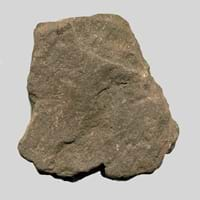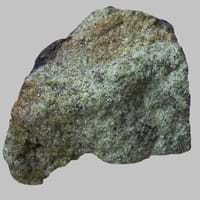Definition
Shale is a fine-grained sedimentary rock which is formed by the compaction of silt and clay-size mineral particles
Lherzolite is a type of ultramafic igneous rock which contains essential olivine and clinopyroxene and orthopyroxene in equal proportions
Discoverer
Unknown
Unknown
Etymology
From German Schalstein laminated limestone, and Schalgebirge layer of stone in stratified rock. From Old English scealu in its base sense of- thing that divides or separate,
From the Lherz Massif, an alpine peridotite complex, at Étang de Lers, near Massat in the French Pyrenees; Lherz is the archaic spelling of this location
Class
Sedimentary Rocks
Igneous Rocks
Sub-Class
Durable Rock, Medium Hardness Rock
Durable Rock, Hard Rock
Group
Not Applicable
Plutonic
Other Categories
Fine Grained Rock, Opaque Rock
Fine Grained Rock, Opaque Rock
Texture
Clastic, Splintery
Grenue
Color
Black, Brown, Buff, Green, Grey, Red, Yellow
Black, Dark Greenish - Grey, Green, Pink, Purple
Durability
Durable
Durable
Appearance
Muddy
Glassy, Vesicular and Foilated
Interior Uses
Decorative Aggregates, Homes, Interior Decoration
Decorative Aggregates, Entryways, Homes, Interior Decoration
Exterior Uses
As Building Stone, As Facing Stone, Office Buildings
As Building Stone, As Facing Stone, Office Buildings
Other Architectural Uses
Curbing
Curbing
Construction Industry
Cement Manufacture, Construction Aggregate, for Road Aggregate, Making natural cement, Raw material for the manufacture of mortar
Landscaping, Manufacture of Magnesium and Dolomite Refractories, Used for flooring, stair treads, borders and window sills.
Medical Industry
Not Yet Used
Not Yet Used
Antiquity Uses
Artifacts, Sculpture
Artifacts, Sculpture
Commercial Uses
Creating Artwork, Pottery
As armour rock for sea walls, Source of Magnesia (MgO), Used in aquariums
Types
Red Shale, Black Shale, Green Shale, Grey Shale and Yellow Shale
Garnet Lherzolite
Features
Easily splits into thin plates, Generally rough to touch, Very fine grained rock
Host Rock for Lead
Archaeological Significance
Monuments
Used
Not Yet Used
Famous Monuments
Jantar Mantar in India
Not Applicable
Famous Sculptures
Data Not Available
Data Not Available
Pictographs
Used
Not Used
Petroglyphs
Used
Not Used
Formation
Shale forms when very fine-grained clay particles are deposited in water which settle at the bottom of water bodies. They are later compacted hence forming shale.
Lherzolite is a fine-grained, hard rock which is a type of metasomatite, essentially altered basalt. It forms with or without crystallization, either below the surface as intrusive rocks or on the surface as extrusive rocks.
Mineral Content
Albite, Biotite, Calcite, Chert, Chlorite, Dolomite, Hematite, Micas, Muscovite or Illite, Pyrite, Quartz, Silica, Sulfides
Harzburgite, Olivine, Pyroxene, Pyrrhotite
Compound Content
Ca, Fe, Mg, Silicon Dioxide, Sodium
CaO, Cr, Chromium(III) Oxide, MgO
Types of Metamorphism
Not Applicable
Cataclastic Metamorphism, Contact Metamorphism
Types of Weathering
Biological Weathering, Chemical Weathering, Mechanical Weathering
Biological Weathering, Chemical Weathering, Mechanical Weathering
Types of Erosion
Chemical Erosion, Coastal Erosion, Glacier Erosion
Chemical Erosion, Water Erosion, Wind Erosion
Grain Size
Very fine-grained
Fine Grained
Fracture
Not Available
Conchoidal
Porosity
Highly Porous
Less Porous
Luster
Dull
Subvitreous to Dull
Specific Gravity
2.2-2.8
2.86
Transparency
Opaque
Opaque
Density
2.4-2.8 g/cm3
2.8-2.9 g/cm3
Resistance
Heat Resistant, Impact Resistant
Heat Resistant, Impact Resistant, Pressure Resistant, Wear Resistant
Deposits in Eastern Continents
Asia
Bangladesh, China, India, Russia
Russia, South Korea
Africa
Ethiopia, Kenya, Morocco, South Africa, Tanzania
Western Africa
Europe
Austria, France, Germany, Greece, Italy, Romania, Scotland, Spain, Switzerland
United Kingdom
Others
Not Yet Found
Not Yet Found
Deposits in Western Continents
South America
Bolivia, Chile, Colombia, Ecuador, Peru, Venezuela
Not Yet Found
Deposits in Oceania Continent
Australia
New South Wales, New Zealand, Queensland, Victoria, Western Australia
Central Australia, Western Australia
Shale vs Lherzolite Characteristics
Though some rocks look identical, they have certain characteristics which distinguish them from others. Characteristics of rocks include texture, appearance, color, fracture, streak, hardness etc. Shale vs Lherzolite characteristics assist us to distinguish and recognize rocks. Also you can check about Properties of Shale and Properties of Lherzolite. Learn more about Shale vs Lherzolite in the next section. The interior uses of Shale include Decorative aggregates, Homes and Interior decoration whereas the interior uses of Lherzolite include Decorative aggregates, Entryways, Homes and Interior decoration. Due to some exceptional properties of Shale and Lherzolite, they have various applications in construction industry. The uses of Shale in construction industry include Cement manufacture, Construction aggregate, For road aggregate, Making natural cement, Raw material for the manufacture of mortar and that of Lherzolite include Landscaping, Manufacture of magnesium and dolomite refractories, Used for flooring, stair treads, borders and window sills..
More about Shale and Lherzolite
Here you can know more about Shale and Lherzolite. The life cycle of a rock consists of formation of rock, composition of rock and transformation of rock. The composition of Shale and Lherzolite consists of mineral content and compound content. The mineral content of Shale includes Albite, Biotite, Calcite, Chert, Chlorite, Dolomite, Hematite, Micas, Muscovite or Illite, Pyrite, Quartz, Silica, Sulfides and mineral content of Lherzolite includes Harzburgite, Olivine, Pyroxene, Pyrrhotite. You can also check out the list of all . When we have to compare Shale vs Lherzolite, the texture, color and appearance plays an important role in determining the type of rock. Shale is available in black, brown, buff, green, grey, red, yellow colors whereas, Lherzolite is available in black, dark greenish - grey, green, pink, purple colors. Appearance of Shale is Muddy and that of Lherzolite is Glassy, Vesicular and Foilated. Properties of rock is another aspect for Shale vs Lherzolite. The hardness of Shale is 3 and that of Lherzolite is 6.5. The types of Shale are Red Shale, Black Shale, Green Shale, Grey Shale and Yellow Shale whereas types of Lherzolite are Garnet Lherzolite. Streak of rock is the color of powder produced when it is dragged across an unweathered surface. The streak of Shale and Lherzolite is white. The specific heat capacity of Shale is 0.39 kJ/Kg K and that of Lherzolite is 0.95 kJ/Kg K. Depending on the properties like hardness, toughness, specific heat capacity, porosity etc., rocks are resistant to heat, wear, impact, etc.Shale is heat resistant, impact resistant whereas Lherzolite is heat resistant, impact resistant, pressure resistant, wear resistant.





